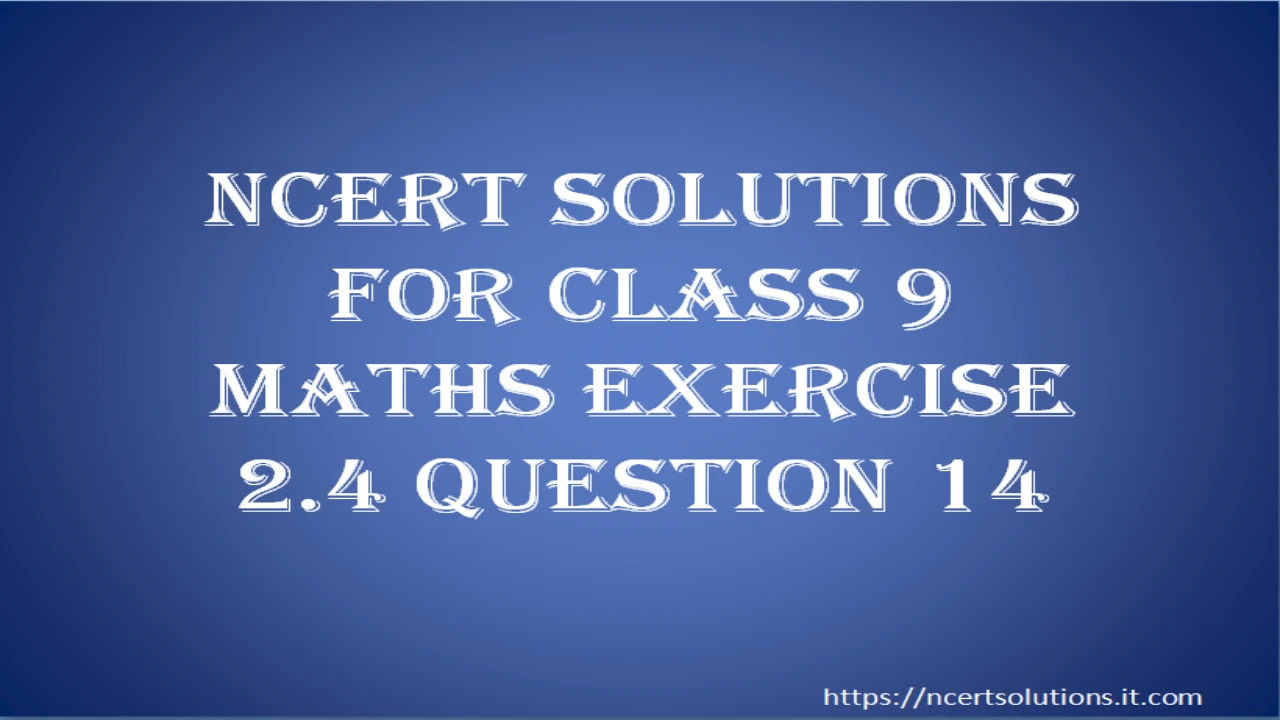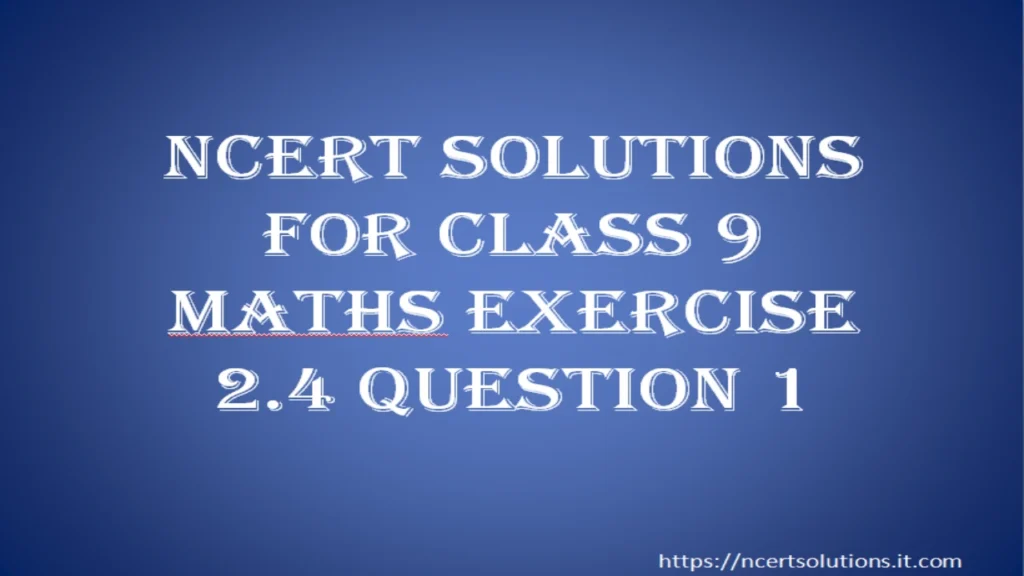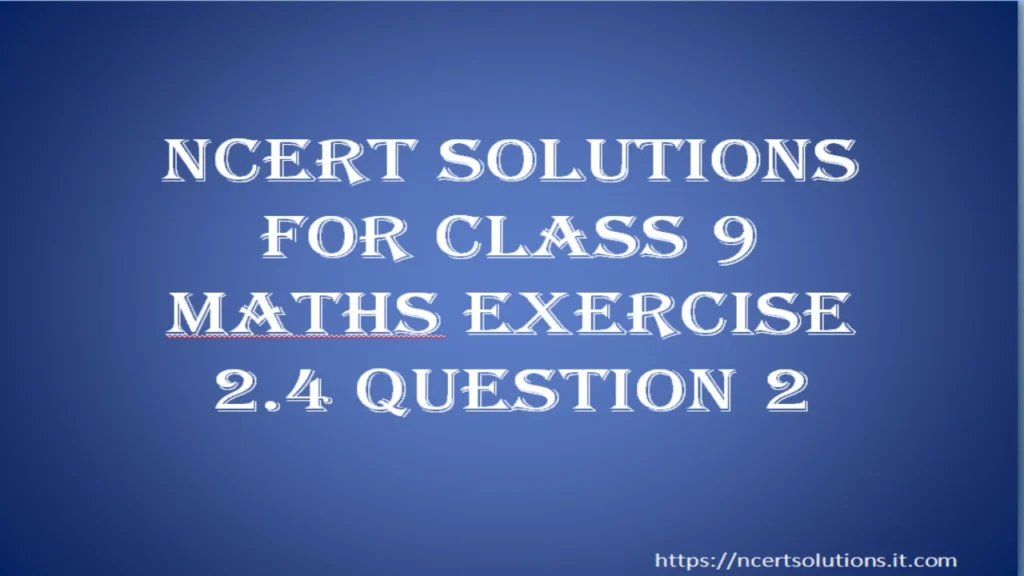NCERT Solutions for Class 9 Maths Exercise 2.4 Question 14

Understanding the Question 🧐
This question asks us to find the value of expressions involving the sum of three cubes, but with a specific instruction: “Without actually calculating the cubes”. This is a big hint that we need to use a shortcut. The shortcut is the special identity we proved in the previous question. This page provides clear, step-by-step ncert solutions showing how to apply this shortcut.
Without actually calculating the cubes, find the value of each of the following:
(i) &&(-12)^3 + (7)^3 + (5)^3&&
(ii) &&(28)^3 + (-15)^3 + (-13)^3&&
The Key Identity: We will use the result from Question 13, which states:
If &&x+y+z=0&&, then &&x^3 + y^3 + z^3 = 3xyz&&.
Part (i): Find the value of &&(-12)^3 + (7)^3 + (5)^3&& 📝
Step 1: Identify &&x, y,&& and &&z&&.
From the expression, we have:
- &&x = -12&&
- &&y = 7&&
- &&z = 5&&
Step 2: Check if the condition &&x+y+z=0&& is met.
Let’s find the sum of the base numbers:
&&x + y + z = -12 + 7 + 5&&
&&= -12 + 12&&
&&= 0&&
Since the sum is &&0&&, the condition is satisfied.
Step 3: Apply the identity &&x^3 + y^3 + z^3 = 3xyz&&.
Now we can use the shortcut to find the value.
&&(-12)^3 + (7)^3 + (5)^3 = 3 \times (-12) \times 7 \times 5&&
Step 4: Calculate the final value.
&&= -36 \times (7 \times 5)&&
&&= -36 \times 35&&
&&= -1260&&
Answer: The value of &&(-12)^3 + (7)^3 + (5)^3&& is &&-1260&&.
Part (ii): Find the value of &&(28)^3 + (-15)^3 + (-13)^3&& 📝
Step 1: Identify &&x, y,&& and &&z&&.
From the expression, we have:
- &&x = 28&&
- &&y = -15&&
- &&z = -13&&
Step 2: Check if the condition &&x+y+z=0&& is met.
Let’s find the sum of these numbers:
&&x + y + z = 28 + (-15) + (-13)&&
&&= 28 – 15 – 13&&
&&= 28 – 28&&
&&= 0&&
Again, the sum is &&0&&, so we can use the identity.
Step 3: Apply the identity &&x^3 + y^3 + z^3 = 3xyz&&.
Substitute the values of &&x, y,&& and &&z&& into the formula.
&&(28)^3 + (-15)^3 + (-13)^3 = 3 \times (28) \times (-15) \times (-13)&&
Step 4: Calculate the final value.
Be careful with the signs. A negative times a negative is a positive.
&&= (3 \times 28) \times ((-15) \times (-13))&&
&&= 84 \times (195)&&
&&= 16380&&
Answer: The value of &&(28)^3 + (-15)^3 + (-13)^3&& is &&16380&&.
- This method is a practical application of the conditional identity &&x^3 + y^3 + z^3 = 3xyz&&.
- Always check if the sum of the bases is zero before applying the formula. This is the most crucial step.
- Pay close attention to negative signs during the final multiplication.
FAQ
Q: What is the shortcut for solving this problem without calculating the cubes?
A: The shortcut is to use the conditional identity proven in Question 13: If the sum of three numbers (&&x, y,&& and &&z&&) is zero, then the sum of their cubes (&&x^3 + y^3 + z^3&&) is equal to &&3&& times their product (&&3xyz&&).
Q: What is the most important first step before applying the shortcut?
A: The most important first step is to check if the sum of the base numbers equals zero. For an expression like &&a^3 + b^3 + c^3&&, you must calculate &&a + b + c&& first. If the sum is zero, you can use the shortcut. If not, this method cannot be applied.
Q: For the expression &&(-12)^3 + (7)^3 + (5)^3&&, is the condition met?
A: Yes, the condition is met because the sum of the bases is &&-12 + 7 + 5 = -12 + 12 = 0&&.
Q: What is the final answer for &&(-12)^3 + (7)^3 + (5)^3&&?
A: The final answer is &&-1260&&.
Q: What is the final answer for &&(28)^3 + (-15)^3 + (-13)^3&&?
A: The final answer is &&16380&&.
Q: What would you do if the sum of the base numbers was not zero?
A: If the sum of the base numbers was not zero, this shortcut would not be valid. You would have to calculate each cube individually and then find their sum as instructed by the standard order of operations.
Further Reading
To see more applications of algebraic identities, refer to your official NCERT Class 9 textbook and other resources available on the NCERT website: https://ncert.nic.in/


